Number 744 - Ozzy Osbourne
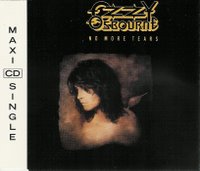
.
 Dont fear people, i am not going to show you clips of Ozzy's family life! Lets just stick to the music side of this particular showman. Now as you know Ozzy has already featured in "The Definitive 1000 Song" with Black Sabbath (See Numbers 826 & 979) well know you do!
Dont fear people, i am not going to show you clips of Ozzy's family life! Lets just stick to the music side of this particular showman. Now as you know Ozzy has already featured in "The Definitive 1000 Song" with Black Sabbath (See Numbers 826 & 979) well know you do!
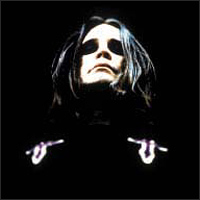 Though many bands have succeeded in earning the hatred of parents and media worldwide throughout the past few decades, arguably only such acts as Alice Cooper, Judas Priest, and Marilyn Manson have tied the controversial record of Ozzy Osbourne. The former Black Sabbath frontman has been ridiculed over his career, mostly due to rumors denouncing him as a psychopath and Satanist. Despite his outlandish reputation, however, one cannot deny that Osbourne has had an immeasurable effect on heavy metal. While he doesn't possess a great voice (it's thin and doesn't have much range), he makes up for it with his good ear and dramatic flair. As a showman, his instincts are nearly as impeccable; his live shows have been overwrought spectacles of gore and glitz that have endeared him to adolescents around the world. Indeed, Osbourne has managed to establish himself as an international superstar, capable of selling millions of records with each album and packing arenas across the globe, capturing new fans with each record. "
Though many bands have succeeded in earning the hatred of parents and media worldwide throughout the past few decades, arguably only such acts as Alice Cooper, Judas Priest, and Marilyn Manson have tied the controversial record of Ozzy Osbourne. The former Black Sabbath frontman has been ridiculed over his career, mostly due to rumors denouncing him as a psychopath and Satanist. Despite his outlandish reputation, however, one cannot deny that Osbourne has had an immeasurable effect on heavy metal. While he doesn't possess a great voice (it's thin and doesn't have much range), he makes up for it with his good ear and dramatic flair. As a showman, his instincts are nearly as impeccable; his live shows have been overwrought spectacles of gore and glitz that have endeared him to adolescents around the world. Indeed, Osbourne has managed to establish himself as an international superstar, capable of selling millions of records with each album and packing arenas across the globe, capturing new fans with each record. "
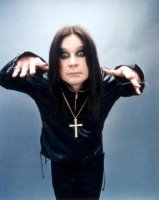 John Michael Osbourne began his professional career in the late '60s, when he teamed up with guitarist Tony Iommi, bassist Geezer Butler, and drummer Bill Ward to form Black Sabbath. The band, made unique by their slow, gloomy melodies and themes, released their self-titled album in 1970, and would go on to release classic platinum records such as Paranoid and Master of Reality throughout the rest of the decade. After the 1978 album Never Say Die, Osbourne was fired from Black Sabbath, which led him to form his own solo project. With his new manager and wife, Sharon, Osbourne formed his own band, the Blizzard of Ozz, with guitarist Randy Rhoads, bassist Bob Daisley, and drummer Lee Kerslake. The group's self-titled first album was released in September 1980 in the U.K. and early 1981 in the U.S. Blizzard of Ozz had some of the same ingredients of Black Sabbath: The lyrics focused on the occult and the guitars were loud and heavy, yet the band was more technically proficient and capable of pulling off variations on standard metal formulas. Featuring the hit singles "Crazy Train" and "Mr. Crowley," Blizzard of Ozz reached number seven on the U.K. charts; it peaked at number 21 in the U.S., continuing to sell for over two years and becoming a huge success. Kerslake and Daisley would be replaced with Tommy Aldridge and Rudy Sarzo shortly before the subsequent November release of Diary of a Madman. This album, which included the drug ode "Flying High Again," charted at number 16 in the U.S. and became another huge seller. As the Diary tour went underway, sales for the album continued to improve as those of Black Sabbath waned. Osbourne had no trouble in attaining mass audiences, and his career seemed to have peaked.
John Michael Osbourne began his professional career in the late '60s, when he teamed up with guitarist Tony Iommi, bassist Geezer Butler, and drummer Bill Ward to form Black Sabbath. The band, made unique by their slow, gloomy melodies and themes, released their self-titled album in 1970, and would go on to release classic platinum records such as Paranoid and Master of Reality throughout the rest of the decade. After the 1978 album Never Say Die, Osbourne was fired from Black Sabbath, which led him to form his own solo project. With his new manager and wife, Sharon, Osbourne formed his own band, the Blizzard of Ozz, with guitarist Randy Rhoads, bassist Bob Daisley, and drummer Lee Kerslake. The group's self-titled first album was released in September 1980 in the U.K. and early 1981 in the U.S. Blizzard of Ozz had some of the same ingredients of Black Sabbath: The lyrics focused on the occult and the guitars were loud and heavy, yet the band was more technically proficient and capable of pulling off variations on standard metal formulas. Featuring the hit singles "Crazy Train" and "Mr. Crowley," Blizzard of Ozz reached number seven on the U.K. charts; it peaked at number 21 in the U.S., continuing to sell for over two years and becoming a huge success. Kerslake and Daisley would be replaced with Tommy Aldridge and Rudy Sarzo shortly before the subsequent November release of Diary of a Madman. This album, which included the drug ode "Flying High Again," charted at number 16 in the U.S. and became another huge seller. As the Diary tour went underway, sales for the album continued to improve as those of Black Sabbath waned. Osbourne had no trouble in attaining mass audiences, and his career seemed to have peaked.
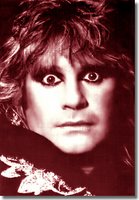 However, controversy soon erupted when he was accused of animal cruelty: During one performance, a bat was thrown on-stage by a fan and Osbourne bit its head off while supposedly thinking that it was fake. The show was canceled when he had to be rushed to the hospital for a rabies vaccination. Not long afterwards, Rhoads was killed in a bizarre plane accident, bringing the band's success to a screeching halt. Osbourne fell into a massive depression shortly after losing his best friend, and plans for his upcoming live album were soon changed. Instead of material recorded with Rhoads, 1982's Speak of the Devil featured live recordings of classic Black Sabbath material and was recorded with guitarist Brad Gillis. Osbourne was freed from his contract with Jet Records and showed up drunk at an Epic Records meeting with two doves, one of which he freed and the other of which he killed in the same manner as the bat; Osbourne was signed to the label. Jake E. Lee became Osbourne's new guitarist for the 1984 studio effort Bark at the Moon. While it didn't match the consistency of Blizzard of Ozz or Diary of a Madman, the record was equally successful, pushing the singer to embark on a tour with glam metal stalwarts Mötley Crüe. Although Bark at the Moon opened up to rave reviews, 1986's Ultimate Sin received rather harsh criticism. The album, although containing the hit single "Shot in the Dark," would be regarded as Osbourne's worst studio effort by numerous critics, who claimed it was redundant and uninteresting; nonetheless, the album was another smash hit.
However, controversy soon erupted when he was accused of animal cruelty: During one performance, a bat was thrown on-stage by a fan and Osbourne bit its head off while supposedly thinking that it was fake. The show was canceled when he had to be rushed to the hospital for a rabies vaccination. Not long afterwards, Rhoads was killed in a bizarre plane accident, bringing the band's success to a screeching halt. Osbourne fell into a massive depression shortly after losing his best friend, and plans for his upcoming live album were soon changed. Instead of material recorded with Rhoads, 1982's Speak of the Devil featured live recordings of classic Black Sabbath material and was recorded with guitarist Brad Gillis. Osbourne was freed from his contract with Jet Records and showed up drunk at an Epic Records meeting with two doves, one of which he freed and the other of which he killed in the same manner as the bat; Osbourne was signed to the label. Jake E. Lee became Osbourne's new guitarist for the 1984 studio effort Bark at the Moon. While it didn't match the consistency of Blizzard of Ozz or Diary of a Madman, the record was equally successful, pushing the singer to embark on a tour with glam metal stalwarts Mötley Crüe. Although Bark at the Moon opened up to rave reviews, 1986's Ultimate Sin received rather harsh criticism. The album, although containing the hit single "Shot in the Dark," would be regarded as Osbourne's worst studio effort by numerous critics, who claimed it was redundant and uninteresting; nonetheless, the album was another smash hit. 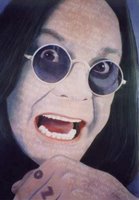 Also in 1986, Osbourne was accused of encouraging suicide among listeners via use of subliminal messages in his Blizzard of Ozz song "Suicide Solution," a song that he claimed was written in relation to the effects of alcohol abuse. Although the case was eventually dismissed, Osbourne once again earned a feared reputation. He pulled up his profile in 1987 with Tribute, a live album recorded in 1981 that was dedicated to the memory of Randy Rhoads. Lee soon left the band, and was replaced with Zakk Wylde for No Rest for the Wicked, which would be released in 1988. The record proved to be one of his strongest yet, highlighted by "Miracle Man," in which Osbourne ridiculed evangelist (and longtime foe) Jimmy Swaggart. Just Say Ozzy, a live EP taken from the subsequent tour, was released in 1990. After recording a new studio album in 1991, Osbourne found himself without the usual enthusiasm to perform, due to his increasing age and his desire to spend more time with his family. When No More Tears was released in the fall, it was confirmed that the following tour would be Osbourne's last before retirement. Following the tour, a live double album, Live & Loud, was released in 1993 to commemorate Osbourne's career, and it was now assumed that the singer's glory days were over.
Also in 1986, Osbourne was accused of encouraging suicide among listeners via use of subliminal messages in his Blizzard of Ozz song "Suicide Solution," a song that he claimed was written in relation to the effects of alcohol abuse. Although the case was eventually dismissed, Osbourne once again earned a feared reputation. He pulled up his profile in 1987 with Tribute, a live album recorded in 1981 that was dedicated to the memory of Randy Rhoads. Lee soon left the band, and was replaced with Zakk Wylde for No Rest for the Wicked, which would be released in 1988. The record proved to be one of his strongest yet, highlighted by "Miracle Man," in which Osbourne ridiculed evangelist (and longtime foe) Jimmy Swaggart. Just Say Ozzy, a live EP taken from the subsequent tour, was released in 1990. After recording a new studio album in 1991, Osbourne found himself without the usual enthusiasm to perform, due to his increasing age and his desire to spend more time with his family. When No More Tears was released in the fall, it was confirmed that the following tour would be Osbourne's last before retirement. Following the tour, a live double album, Live & Loud, was released in 1993 to commemorate Osbourne's career, and it was now assumed that the singer's glory days were over.
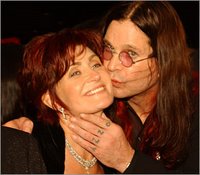 However, the retirement was not to be -- Osbourne resurfaced in 1995 with Ozzmosis, which, despite mixed reviews, would sell three million copies within a year after its release. After the subsequent tour proved to be one of the best-selling of the summer, Osbourne created Ozzfest, a tour package that would feature himself along with many other metal bands. While there were only two performances in 1996, a live album was nonetheless released, simply titled The Ozzfest. 1997's tour package included such metal acts as Pantera, Marilyn Manson, and a Black Sabbath reunion from which only Bill Ward was absent. With the exception of Sarah McLachlan's Lilith Fair, Ozzfest 1997 was the most successful tour of the year and Osbourne released a compilation album, The Ozzman Cometh, in November. Shortly afterwards, Osbourne united the entire original lineup of Black Sabbath to record the live album Reunion, which was released in 1998. He also found time to duet alongside rapper Busta Rhymes for a re-make of the Sabbath classic "Iron Man," re-titled "This Means War," which was included on Rhymes' 1998 release Extinction Level Event (The Final World Front). Sabbath continued to tour well into 1999, as they again headlined the year's Ozzfest, which was billed as their supposed final tour. The same year, a grisly Ozzy action figure was shipped out to toy stores -- complete with tiny decapitated bats. Osbourne also finally began work on the follow-up to his 1995 lackluster solo release, Ozzmosis, which saw him joined by returning guitarist Wylde, plus former Faith No More drummer Mike Bordin and former Suicidal Tendencies/Infectious Grooves bassist Robert Trujillo.
However, the retirement was not to be -- Osbourne resurfaced in 1995 with Ozzmosis, which, despite mixed reviews, would sell three million copies within a year after its release. After the subsequent tour proved to be one of the best-selling of the summer, Osbourne created Ozzfest, a tour package that would feature himself along with many other metal bands. While there were only two performances in 1996, a live album was nonetheless released, simply titled The Ozzfest. 1997's tour package included such metal acts as Pantera, Marilyn Manson, and a Black Sabbath reunion from which only Bill Ward was absent. With the exception of Sarah McLachlan's Lilith Fair, Ozzfest 1997 was the most successful tour of the year and Osbourne released a compilation album, The Ozzman Cometh, in November. Shortly afterwards, Osbourne united the entire original lineup of Black Sabbath to record the live album Reunion, which was released in 1998. He also found time to duet alongside rapper Busta Rhymes for a re-make of the Sabbath classic "Iron Man," re-titled "This Means War," which was included on Rhymes' 1998 release Extinction Level Event (The Final World Front). Sabbath continued to tour well into 1999, as they again headlined the year's Ozzfest, which was billed as their supposed final tour. The same year, a grisly Ozzy action figure was shipped out to toy stores -- complete with tiny decapitated bats. Osbourne also finally began work on the follow-up to his 1995 lackluster solo release, Ozzmosis, which saw him joined by returning guitarist Wylde, plus former Faith No More drummer Mike Bordin and former Suicidal Tendencies/Infectious Grooves bassist Robert Trujillo.
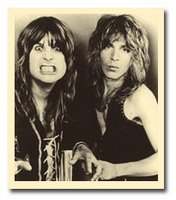 2001 was greeted with the news that not only was Black Sabbath reuniting once again for the summer's edition of Ozzfest, but that the quartet was going to enter the recording studio in the fall with producer Rick Rubin to work on the original lineup's first all-new album since 1978's Never Say Die. Unfortunately, Epic Records caught word of Osbourne's plans and stopped both a post-Ozzfest tour with Disturbed and the album itself until he finished his solo record. Ozzy fans were given the double-disc Ozzfest: Second Stage Live to tide them over in the meantime -- the collection included tracks from most of the bands that participated in the 2000 festival, as well as tracks from Ozzfest's inaugural 1996 lineup. Finally, the new solo album, Down to Earth, appeared in the fall of 2001, followed by a few successful rock radio singles and a huge Christmas tour with co-headliner Rob Zombie. Meanwhile, inspired by an episode of MTV's Cribs starring his family, Osbourne and the network's producers took a chance on creating a reality show based around the infamous singer. Following his family around the house for several months at the end of 2001, the end result was The Osbournes, one of the most successful shows in the history of the network. The show, which was equal parts documentary and sitcom, reinvented Osbourne as a befuddled father with a razor sharp wit and a loving family. It also proved to also be a critical success, and Osbourne found himself invited to a White House dinner to promote his animal protection activism, something that only came to light after an episode of the show dedicated to the family's numerous pets. ~ [Barry Weber & Greg Prato]
2001 was greeted with the news that not only was Black Sabbath reuniting once again for the summer's edition of Ozzfest, but that the quartet was going to enter the recording studio in the fall with producer Rick Rubin to work on the original lineup's first all-new album since 1978's Never Say Die. Unfortunately, Epic Records caught word of Osbourne's plans and stopped both a post-Ozzfest tour with Disturbed and the album itself until he finished his solo record. Ozzy fans were given the double-disc Ozzfest: Second Stage Live to tide them over in the meantime -- the collection included tracks from most of the bands that participated in the 2000 festival, as well as tracks from Ozzfest's inaugural 1996 lineup. Finally, the new solo album, Down to Earth, appeared in the fall of 2001, followed by a few successful rock radio singles and a huge Christmas tour with co-headliner Rob Zombie. Meanwhile, inspired by an episode of MTV's Cribs starring his family, Osbourne and the network's producers took a chance on creating a reality show based around the infamous singer. Following his family around the house for several months at the end of 2001, the end result was The Osbournes, one of the most successful shows in the history of the network. The show, which was equal parts documentary and sitcom, reinvented Osbourne as a befuddled father with a razor sharp wit and a loving family. It also proved to also be a critical success, and Osbourne found himself invited to a White House dinner to promote his animal protection activism, something that only came to light after an episode of the show dedicated to the family's numerous pets. ~ [Barry Weber & Greg Prato]
Number 744
Ozzy Osbourne
"No More Tears"
(1991)
. Ozzy Osbourne
"No More Tears"
(1991)
Genre:Rock
 Dont fear people, i am not going to show you clips of Ozzy's family life! Lets just stick to the music side of this particular showman. Now as you know Ozzy has already featured in "The Definitive 1000 Song" with Black Sabbath (See Numbers 826 & 979) well know you do!
Dont fear people, i am not going to show you clips of Ozzy's family life! Lets just stick to the music side of this particular showman. Now as you know Ozzy has already featured in "The Definitive 1000 Song" with Black Sabbath (See Numbers 826 & 979) well know you do!  Though many bands have succeeded in earning the hatred of parents and media worldwide throughout the past few decades, arguably only such acts as Alice Cooper, Judas Priest, and Marilyn Manson have tied the controversial record of Ozzy Osbourne. The former Black Sabbath frontman has been ridiculed over his career, mostly due to rumors denouncing him as a psychopath and Satanist. Despite his outlandish reputation, however, one cannot deny that Osbourne has had an immeasurable effect on heavy metal. While he doesn't possess a great voice (it's thin and doesn't have much range), he makes up for it with his good ear and dramatic flair. As a showman, his instincts are nearly as impeccable; his live shows have been overwrought spectacles of gore and glitz that have endeared him to adolescents around the world. Indeed, Osbourne has managed to establish himself as an international superstar, capable of selling millions of records with each album and packing arenas across the globe, capturing new fans with each record. "
Though many bands have succeeded in earning the hatred of parents and media worldwide throughout the past few decades, arguably only such acts as Alice Cooper, Judas Priest, and Marilyn Manson have tied the controversial record of Ozzy Osbourne. The former Black Sabbath frontman has been ridiculed over his career, mostly due to rumors denouncing him as a psychopath and Satanist. Despite his outlandish reputation, however, one cannot deny that Osbourne has had an immeasurable effect on heavy metal. While he doesn't possess a great voice (it's thin and doesn't have much range), he makes up for it with his good ear and dramatic flair. As a showman, his instincts are nearly as impeccable; his live shows have been overwrought spectacles of gore and glitz that have endeared him to adolescents around the world. Indeed, Osbourne has managed to establish himself as an international superstar, capable of selling millions of records with each album and packing arenas across the globe, capturing new fans with each record. "  John Michael Osbourne began his professional career in the late '60s, when he teamed up with guitarist Tony Iommi, bassist Geezer Butler, and drummer Bill Ward to form Black Sabbath. The band, made unique by their slow, gloomy melodies and themes, released their self-titled album in 1970, and would go on to release classic platinum records such as Paranoid and Master of Reality throughout the rest of the decade. After the 1978 album Never Say Die, Osbourne was fired from Black Sabbath, which led him to form his own solo project. With his new manager and wife, Sharon, Osbourne formed his own band, the Blizzard of Ozz, with guitarist Randy Rhoads, bassist Bob Daisley, and drummer Lee Kerslake. The group's self-titled first album was released in September 1980 in the U.K. and early 1981 in the U.S. Blizzard of Ozz had some of the same ingredients of Black Sabbath: The lyrics focused on the occult and the guitars were loud and heavy, yet the band was more technically proficient and capable of pulling off variations on standard metal formulas. Featuring the hit singles "Crazy Train" and "Mr. Crowley," Blizzard of Ozz reached number seven on the U.K. charts; it peaked at number 21 in the U.S., continuing to sell for over two years and becoming a huge success. Kerslake and Daisley would be replaced with Tommy Aldridge and Rudy Sarzo shortly before the subsequent November release of Diary of a Madman. This album, which included the drug ode "Flying High Again," charted at number 16 in the U.S. and became another huge seller. As the Diary tour went underway, sales for the album continued to improve as those of Black Sabbath waned. Osbourne had no trouble in attaining mass audiences, and his career seemed to have peaked.
John Michael Osbourne began his professional career in the late '60s, when he teamed up with guitarist Tony Iommi, bassist Geezer Butler, and drummer Bill Ward to form Black Sabbath. The band, made unique by their slow, gloomy melodies and themes, released their self-titled album in 1970, and would go on to release classic platinum records such as Paranoid and Master of Reality throughout the rest of the decade. After the 1978 album Never Say Die, Osbourne was fired from Black Sabbath, which led him to form his own solo project. With his new manager and wife, Sharon, Osbourne formed his own band, the Blizzard of Ozz, with guitarist Randy Rhoads, bassist Bob Daisley, and drummer Lee Kerslake. The group's self-titled first album was released in September 1980 in the U.K. and early 1981 in the U.S. Blizzard of Ozz had some of the same ingredients of Black Sabbath: The lyrics focused on the occult and the guitars were loud and heavy, yet the band was more technically proficient and capable of pulling off variations on standard metal formulas. Featuring the hit singles "Crazy Train" and "Mr. Crowley," Blizzard of Ozz reached number seven on the U.K. charts; it peaked at number 21 in the U.S., continuing to sell for over two years and becoming a huge success. Kerslake and Daisley would be replaced with Tommy Aldridge and Rudy Sarzo shortly before the subsequent November release of Diary of a Madman. This album, which included the drug ode "Flying High Again," charted at number 16 in the U.S. and became another huge seller. As the Diary tour went underway, sales for the album continued to improve as those of Black Sabbath waned. Osbourne had no trouble in attaining mass audiences, and his career seemed to have peaked. However, controversy soon erupted when he was accused of animal cruelty: During one performance, a bat was thrown on-stage by a fan and Osbourne bit its head off while supposedly thinking that it was fake. The show was canceled when he had to be rushed to the hospital for a rabies vaccination. Not long afterwards, Rhoads was killed in a bizarre plane accident, bringing the band's success to a screeching halt. Osbourne fell into a massive depression shortly after losing his best friend, and plans for his upcoming live album were soon changed. Instead of material recorded with Rhoads, 1982's Speak of the Devil featured live recordings of classic Black Sabbath material and was recorded with guitarist Brad Gillis. Osbourne was freed from his contract with Jet Records and showed up drunk at an Epic Records meeting with two doves, one of which he freed and the other of which he killed in the same manner as the bat; Osbourne was signed to the label. Jake E. Lee became Osbourne's new guitarist for the 1984 studio effort Bark at the Moon. While it didn't match the consistency of Blizzard of Ozz or Diary of a Madman, the record was equally successful, pushing the singer to embark on a tour with glam metal stalwarts Mötley Crüe. Although Bark at the Moon opened up to rave reviews, 1986's Ultimate Sin received rather harsh criticism. The album, although containing the hit single "Shot in the Dark," would be regarded as Osbourne's worst studio effort by numerous critics, who claimed it was redundant and uninteresting; nonetheless, the album was another smash hit.
However, controversy soon erupted when he was accused of animal cruelty: During one performance, a bat was thrown on-stage by a fan and Osbourne bit its head off while supposedly thinking that it was fake. The show was canceled when he had to be rushed to the hospital for a rabies vaccination. Not long afterwards, Rhoads was killed in a bizarre plane accident, bringing the band's success to a screeching halt. Osbourne fell into a massive depression shortly after losing his best friend, and plans for his upcoming live album were soon changed. Instead of material recorded with Rhoads, 1982's Speak of the Devil featured live recordings of classic Black Sabbath material and was recorded with guitarist Brad Gillis. Osbourne was freed from his contract with Jet Records and showed up drunk at an Epic Records meeting with two doves, one of which he freed and the other of which he killed in the same manner as the bat; Osbourne was signed to the label. Jake E. Lee became Osbourne's new guitarist for the 1984 studio effort Bark at the Moon. While it didn't match the consistency of Blizzard of Ozz or Diary of a Madman, the record was equally successful, pushing the singer to embark on a tour with glam metal stalwarts Mötley Crüe. Although Bark at the Moon opened up to rave reviews, 1986's Ultimate Sin received rather harsh criticism. The album, although containing the hit single "Shot in the Dark," would be regarded as Osbourne's worst studio effort by numerous critics, who claimed it was redundant and uninteresting; nonetheless, the album was another smash hit.  Also in 1986, Osbourne was accused of encouraging suicide among listeners via use of subliminal messages in his Blizzard of Ozz song "Suicide Solution," a song that he claimed was written in relation to the effects of alcohol abuse. Although the case was eventually dismissed, Osbourne once again earned a feared reputation. He pulled up his profile in 1987 with Tribute, a live album recorded in 1981 that was dedicated to the memory of Randy Rhoads. Lee soon left the band, and was replaced with Zakk Wylde for No Rest for the Wicked, which would be released in 1988. The record proved to be one of his strongest yet, highlighted by "Miracle Man," in which Osbourne ridiculed evangelist (and longtime foe) Jimmy Swaggart. Just Say Ozzy, a live EP taken from the subsequent tour, was released in 1990. After recording a new studio album in 1991, Osbourne found himself without the usual enthusiasm to perform, due to his increasing age and his desire to spend more time with his family. When No More Tears was released in the fall, it was confirmed that the following tour would be Osbourne's last before retirement. Following the tour, a live double album, Live & Loud, was released in 1993 to commemorate Osbourne's career, and it was now assumed that the singer's glory days were over.
Also in 1986, Osbourne was accused of encouraging suicide among listeners via use of subliminal messages in his Blizzard of Ozz song "Suicide Solution," a song that he claimed was written in relation to the effects of alcohol abuse. Although the case was eventually dismissed, Osbourne once again earned a feared reputation. He pulled up his profile in 1987 with Tribute, a live album recorded in 1981 that was dedicated to the memory of Randy Rhoads. Lee soon left the band, and was replaced with Zakk Wylde for No Rest for the Wicked, which would be released in 1988. The record proved to be one of his strongest yet, highlighted by "Miracle Man," in which Osbourne ridiculed evangelist (and longtime foe) Jimmy Swaggart. Just Say Ozzy, a live EP taken from the subsequent tour, was released in 1990. After recording a new studio album in 1991, Osbourne found himself without the usual enthusiasm to perform, due to his increasing age and his desire to spend more time with his family. When No More Tears was released in the fall, it was confirmed that the following tour would be Osbourne's last before retirement. Following the tour, a live double album, Live & Loud, was released in 1993 to commemorate Osbourne's career, and it was now assumed that the singer's glory days were over. However, the retirement was not to be -- Osbourne resurfaced in 1995 with Ozzmosis, which, despite mixed reviews, would sell three million copies within a year after its release. After the subsequent tour proved to be one of the best-selling of the summer, Osbourne created Ozzfest, a tour package that would feature himself along with many other metal bands. While there were only two performances in 1996, a live album was nonetheless released, simply titled The Ozzfest. 1997's tour package included such metal acts as Pantera, Marilyn Manson, and a Black Sabbath reunion from which only Bill Ward was absent. With the exception of Sarah McLachlan's Lilith Fair, Ozzfest 1997 was the most successful tour of the year and Osbourne released a compilation album, The Ozzman Cometh, in November. Shortly afterwards, Osbourne united the entire original lineup of Black Sabbath to record the live album Reunion, which was released in 1998. He also found time to duet alongside rapper Busta Rhymes for a re-make of the Sabbath classic "Iron Man," re-titled "This Means War," which was included on Rhymes' 1998 release Extinction Level Event (The Final World Front). Sabbath continued to tour well into 1999, as they again headlined the year's Ozzfest, which was billed as their supposed final tour. The same year, a grisly Ozzy action figure was shipped out to toy stores -- complete with tiny decapitated bats. Osbourne also finally began work on the follow-up to his 1995 lackluster solo release, Ozzmosis, which saw him joined by returning guitarist Wylde, plus former Faith No More drummer Mike Bordin and former Suicidal Tendencies/Infectious Grooves bassist Robert Trujillo.
However, the retirement was not to be -- Osbourne resurfaced in 1995 with Ozzmosis, which, despite mixed reviews, would sell three million copies within a year after its release. After the subsequent tour proved to be one of the best-selling of the summer, Osbourne created Ozzfest, a tour package that would feature himself along with many other metal bands. While there were only two performances in 1996, a live album was nonetheless released, simply titled The Ozzfest. 1997's tour package included such metal acts as Pantera, Marilyn Manson, and a Black Sabbath reunion from which only Bill Ward was absent. With the exception of Sarah McLachlan's Lilith Fair, Ozzfest 1997 was the most successful tour of the year and Osbourne released a compilation album, The Ozzman Cometh, in November. Shortly afterwards, Osbourne united the entire original lineup of Black Sabbath to record the live album Reunion, which was released in 1998. He also found time to duet alongside rapper Busta Rhymes for a re-make of the Sabbath classic "Iron Man," re-titled "This Means War," which was included on Rhymes' 1998 release Extinction Level Event (The Final World Front). Sabbath continued to tour well into 1999, as they again headlined the year's Ozzfest, which was billed as their supposed final tour. The same year, a grisly Ozzy action figure was shipped out to toy stores -- complete with tiny decapitated bats. Osbourne also finally began work on the follow-up to his 1995 lackluster solo release, Ozzmosis, which saw him joined by returning guitarist Wylde, plus former Faith No More drummer Mike Bordin and former Suicidal Tendencies/Infectious Grooves bassist Robert Trujillo. 2001 was greeted with the news that not only was Black Sabbath reuniting once again for the summer's edition of Ozzfest, but that the quartet was going to enter the recording studio in the fall with producer Rick Rubin to work on the original lineup's first all-new album since 1978's Never Say Die. Unfortunately, Epic Records caught word of Osbourne's plans and stopped both a post-Ozzfest tour with Disturbed and the album itself until he finished his solo record. Ozzy fans were given the double-disc Ozzfest: Second Stage Live to tide them over in the meantime -- the collection included tracks from most of the bands that participated in the 2000 festival, as well as tracks from Ozzfest's inaugural 1996 lineup. Finally, the new solo album, Down to Earth, appeared in the fall of 2001, followed by a few successful rock radio singles and a huge Christmas tour with co-headliner Rob Zombie. Meanwhile, inspired by an episode of MTV's Cribs starring his family, Osbourne and the network's producers took a chance on creating a reality show based around the infamous singer. Following his family around the house for several months at the end of 2001, the end result was The Osbournes, one of the most successful shows in the history of the network. The show, which was equal parts documentary and sitcom, reinvented Osbourne as a befuddled father with a razor sharp wit and a loving family. It also proved to also be a critical success, and Osbourne found himself invited to a White House dinner to promote his animal protection activism, something that only came to light after an episode of the show dedicated to the family's numerous pets. ~ [Barry Weber & Greg Prato]
2001 was greeted with the news that not only was Black Sabbath reuniting once again for the summer's edition of Ozzfest, but that the quartet was going to enter the recording studio in the fall with producer Rick Rubin to work on the original lineup's first all-new album since 1978's Never Say Die. Unfortunately, Epic Records caught word of Osbourne's plans and stopped both a post-Ozzfest tour with Disturbed and the album itself until he finished his solo record. Ozzy fans were given the double-disc Ozzfest: Second Stage Live to tide them over in the meantime -- the collection included tracks from most of the bands that participated in the 2000 festival, as well as tracks from Ozzfest's inaugural 1996 lineup. Finally, the new solo album, Down to Earth, appeared in the fall of 2001, followed by a few successful rock radio singles and a huge Christmas tour with co-headliner Rob Zombie. Meanwhile, inspired by an episode of MTV's Cribs starring his family, Osbourne and the network's producers took a chance on creating a reality show based around the infamous singer. Following his family around the house for several months at the end of 2001, the end result was The Osbournes, one of the most successful shows in the history of the network. The show, which was equal parts documentary and sitcom, reinvented Osbourne as a befuddled father with a razor sharp wit and a loving family. It also proved to also be a critical success, and Osbourne found himself invited to a White House dinner to promote his animal protection activism, something that only came to light after an episode of the show dedicated to the family's numerous pets. ~ [Barry Weber & Greg Prato]For Alice Cooper see MM Vol 2 #121
For Judas Priest see Number 527  Crowbarreds choice for Website to find more on Ozzy Osbourne ... Click on the address http://live-bootleg.blogspot.com/2006/12/ozzy-osbourne-ultimate-sin-tour-1986.html
Crowbarreds choice for Website to find more on Ozzy Osbourne ... Click on the address http://live-bootleg.blogspot.com/2006/12/ozzy-osbourne-ultimate-sin-tour-1986.html


For Marilyn Manson see Number 499
For Sarah McLachlan see Number 653
For Faith No More see Number 780
For Rob Zombie see MM Vol 1 #036
For Motley Crue see Number 708
For Pantera see Number 815
Now wasn't that informative? Its a shame the people at Artist Direct dont write a monthy magazine. Maybe they could call it "Tumbling Boulder" The critics there are informative and not of their own opinion. If you are serrious about music there really is no other place like Artist Direct. (and no, they dont pay me one cent. Mind you if they decided to put a magazine together, i would quite happily go work for them) Which leads us to ...........
 What does Rolling Stone Magazine think about Ozzy?
What does Rolling Stone Magazine think about Ozzy?
 What does Rolling Stone Magazine think about Ozzy?
What does Rolling Stone Magazine think about Ozzy? "Ozzy Osbourne left Black Sabbath in 1979, on full metal alert. Backed by virtuoso guitarist Randy Rhoads, Osbourne then made the most vital music of his solo career -- including songs such as "Crazy Train," "Suicide Solution" and the drug epic "Flying High Again," which featured Rhoads' spasmodic guitar and set an unwitting template for the hair metal that followed. After Rhoads' death in a plane crash in 1982, Osbourne never found as talented a guitarist to support him (though Zakk Wylde came close). By the late Eighties, Ozzy was metal's Old Faithful: frightening by design and never daring to innovate. "Mama, I'm Coming Home," co-written by Motorhead's Lemmy Kilmister, was spartan folk metal for a bruised generation, but most of Ozzy's Nineties output blended together into an unaware, babbling cacophony. Looking for early hints of Ozzy's parenting style? Check out the excellent live version of 1980's "I Don't Know": "Don't look at me for answers/Don't ask me/I don't know."
JON CARAMANICA(From RS 916 – February 20, 2003)
JON CARAMANICA(From RS 916 – February 20, 2003)
See what i mean .. sigh
Rolling Stone Top 500 Songs ranked this song at Number (You must be dreaming) the Album ranked at Number (Stop it! its worse than being tickled)
 Crowbarreds choice for Website to find more on Ozzy Osbourne ... Click on the address http://live-bootleg.blogspot.com/2006/12/ozzy-osbourne-ultimate-sin-tour-1986.html
Crowbarreds choice for Website to find more on Ozzy Osbourne ... Click on the address http://live-bootleg.blogspot.com/2006/12/ozzy-osbourne-ultimate-sin-tour-1986.htmlThis song has a crowbarred rating of 66.5 out of 108
Tags: Ozzy Osbourne, Rock, 1991, Black Sabbath, Alice Cooper, Judas Priest, Marilyn Manson, Tommy Iommi, Randy Rhoads, Motley Crue, Zakk Wylde, Pantera, Sarah McLachlan, Busta Rhymes, Faith No More, Disturbed, Rob Zombie, Music, Youtube, The Definitive 1000 Songs of all Time, Rolling Stone Magazine
Search by Genre: ALT POP-ALT PUNK-ALT ROCK-ALTERNATIVE-BIZARRE-BLUES-BRIT POP-COMEDY-COUNTRY-CROONER-DANCE-DISCO-DO WOP-ELECTRONIA-FOLK SINGER-FOLK ROCK-FUNK-GARAGE ROCK-GLAM ROCK-GOSPEL-GRUNGE-GUITARIST-HAIR ROCK-HARD ROCK-HIP HOP-INDIE POP-INDIE ROCK-INDUSTRIAL ROCK- INSTRUMENTAL-JAZZ-LAZY SUNDAY-NEW WAVE-NU ROCK-POP-POP ROCK-PROG ROCK-PSYCHEDELIC ROCK-PUNK POP-PUNK ROCK-R&B-RAP-REGGAE-ROCK-ROCK N ROLL-SINGER SONGWRITER-SKA ROCK-SKIFFLE-SOFT ROCK-SOUL-SOUTHERN ROCK-SURF ROCK-SYNTH POP-TENOR-VOCAL
By The Year 1955 to 2005:
1955, 1956, 1957, 1958, 1959, 1960, 1961, 1962, 1963, 1964, 1965, 1966, 1967, 1968, 1969, 1970, 1971, 1972, 1973, 1974, 1975, 1976, 1977, 1978, 1979, 1980, 1981, 1982, 1983, 1984, 1985, 1986, 1987, 1988, 1989, 1990, 1991, 1992, 1993, 1994, 1995, 1996, 1997, 1998, 1999, 2000, 2001, 2002, 2003, 2004, 2005

underlay trademe
Labels: Ozzy Osbourne 744



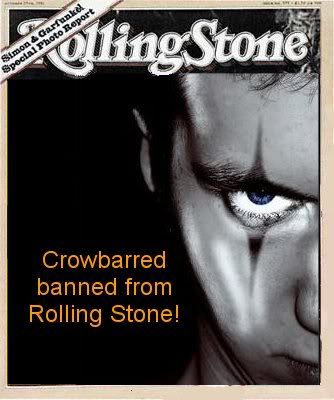








0 Comments:
Post a Comment
<< Home